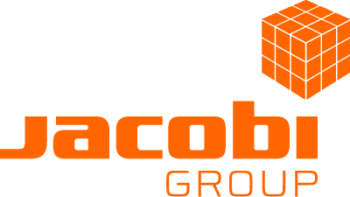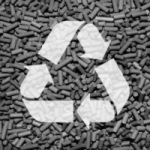Hydrogen sulphide (H₂S) removal from CO₂ enriched air
Biogas can be upgraded to biomethane, that can then be fed directly into the natural gas grid or used as a vehicle fuel to reduce greenhouse gas emissions by separating the carbon dioxide (CO₂)/methane (CH₄) mixture.
There are different methods to separate the carbon dioxide (CO₂)/methane (CH₄) mixture in biogas. Water washing is one of the more popular methods of biogas separation. This is effective as carbon dioxide is soluble in water and methane is almost insoluble. The carbon dioxide is absorbed at high pressure in the water and desorbed from the water at lower pressure and in presence of an airflow. This air flow will also take up hydrogen sulphide (H₂S) present in the water which causes the typical rotten egg smell when released into the environment. Hydrogen Sulphide (H₂S) is therefore removed from the carbon dioxide (CO₂) enriched air using mobile and/or fixed filters with activated carbon prior to discharge to avoid complaints from workers and neighbours.
BIOGAS: MOBILE FILTER
EcoFlow™
Hydrogen sulphide (H₂S) removal from CO₂ enriched air is achieved using filters from the EcoFlow™ range of mobile adsorbers, which are installed immediately prior to the discharge into the atmosphere.
Jacobi Services has a full range of mobile filters for flow rates between 75 and 40,000 m³/h air per filter. Our wide range of rental EcoFlow™ filters are offered via the local sales offices, avoiding international transport.
BIOGAS: SOLUTIONS
Auxiliary equipment and additional services
In addition to mobile filters and different media, Jacobi Services also offers various items of auxiliary equipment and additional services for Hydrogen sulphide (H₂S) removal from CO₂ enriched air in biomethane production plants, including:
- Selection of the type and number of EcoFlow™ filters. The selection depends on the flowrate and the estimated annual activated carbon consumption.
- A series of removable insulation jackets to prevent condensation of water and to keep the relative humidity within an acceptable range for EcoFlow™ mobile filters.
- Laboratory assessment of process and isotherm generation, as well as self-ignition testing, under externally accreditation, of virgin or spent activated carbon.
Recycling and reactivation
Depending on the region and the composition of the spent carbon, different recycling or disposal routes are possible. Impregnated spent activated carbons are currently not recyclable.

Activated carbon
AddSorb™ VA-series range of impregnated activated carbons are advised for hydrogen sulphide (H₂S) from CO₂ enriched air prior to discharge into the atmosphere.
GET IN TOUCH
Fill out the short form below and our team will be in touch.
*Indicates a mandatory field.




